Graphing Rational Functions with Horizontal and Vertical Asymptotes
If we choose one input on each side of an asymptote, we can tell which section of the plane the function will occupy.
This post is part of the book Justin Math: Algebra. Suggested citation: Skycak, J. (2018). Graphing Rational Functions with Horizontal and Vertical Asymptotes. In Justin Math: Algebra. https://justinmath.com/graphing-rational-functions-with-horizontal-and-vertical-asymptotes/
Want to get notified about new posts? Join the mailing list and follow on X/Twitter.
The horizontal and vertical asymptotes of a rational function can give us insight into the shape of its graph.
For example, consider the function $r(x)=\frac{3x}{x-1}$, which has a horizontal asymptote $y=3$ and a vertical asymptote $x=1$.
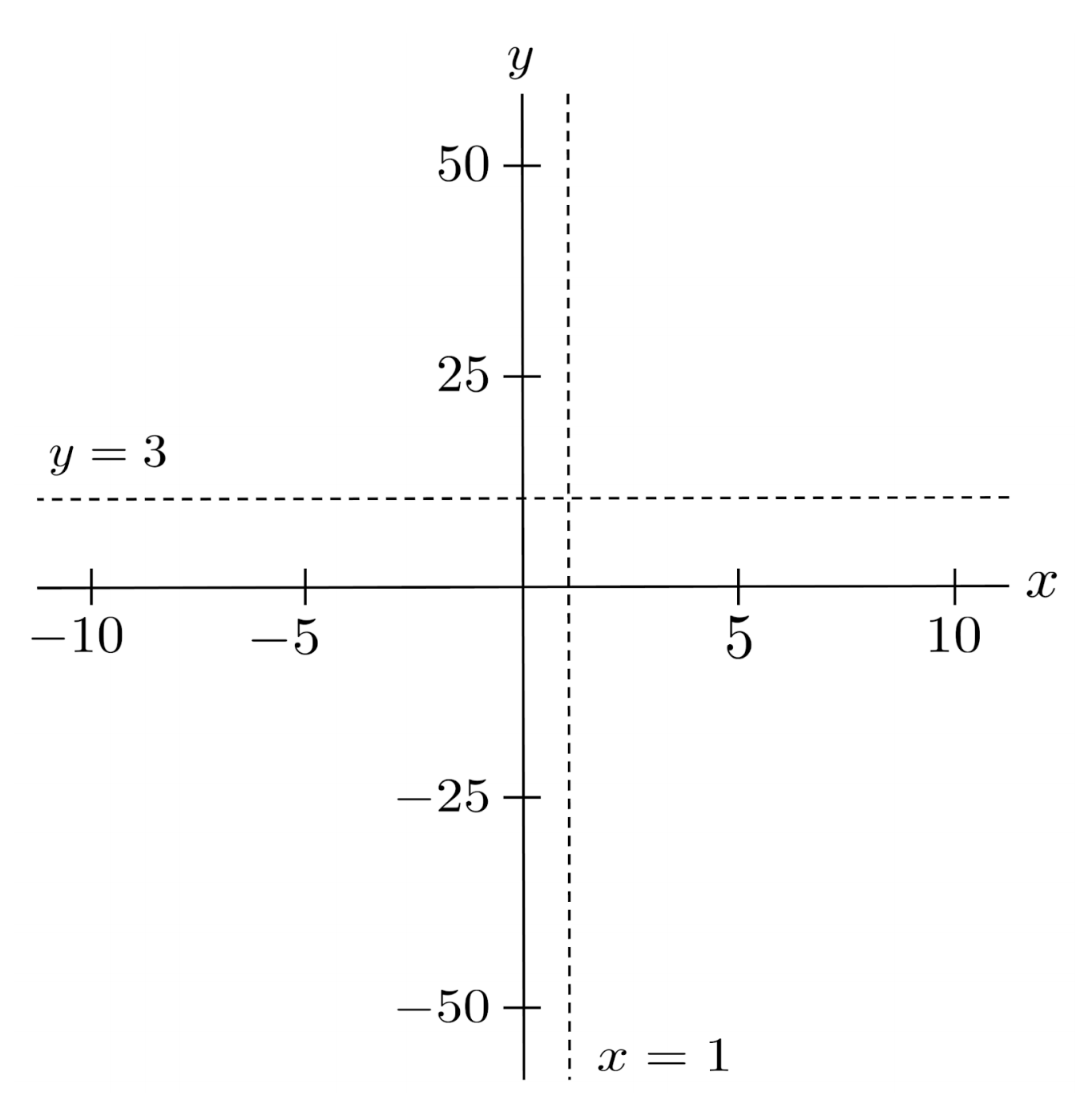
If we choose one input on each side of the vertical asymptote, we can tell which section of the plane the function will occupy.
On the left side, we evaluate $r(0.9)=-27$, which indicates the section below the $y=3$ asymptote. On the right side, we evaluate $r(1.1)=33$, which indicates the section above the $y=3$ asymptote.
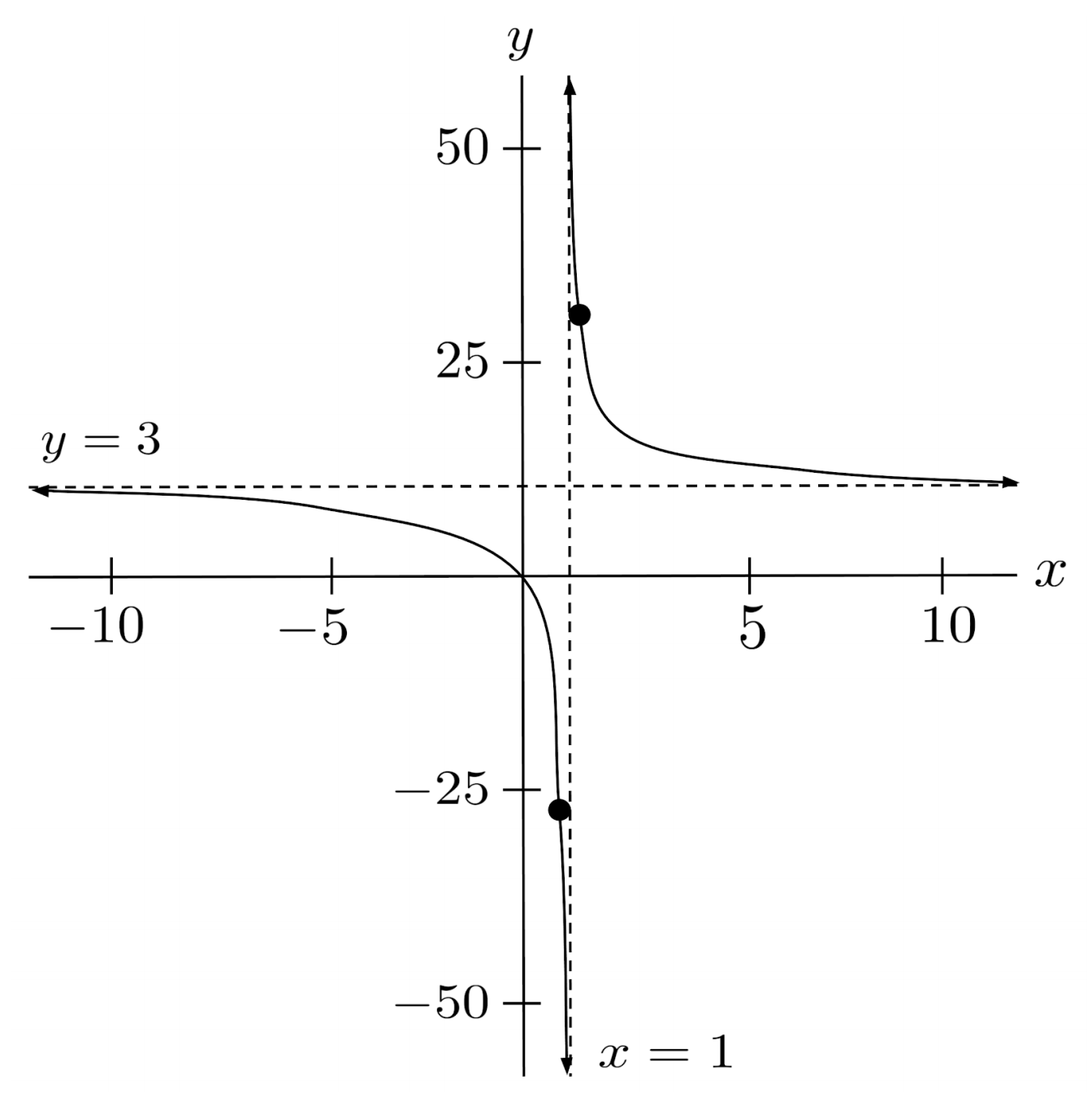
Case of Multiple Vertical Asymptotes
When there are multiple vertical asymptotes, we just have to choose test points on the sides of each asymptote.
For example, to graph the function $r(x) = \frac{x}{x^2-4}$ which has vertical asymptotes $x=-2$ and $x=2$, we can evaluate $r(-2.1) \approx -5.12$, $r(-1.9) \approx 4.87$, $r(1.9) \approx -4.87$, and $r(2.1) \approx 5.12$.
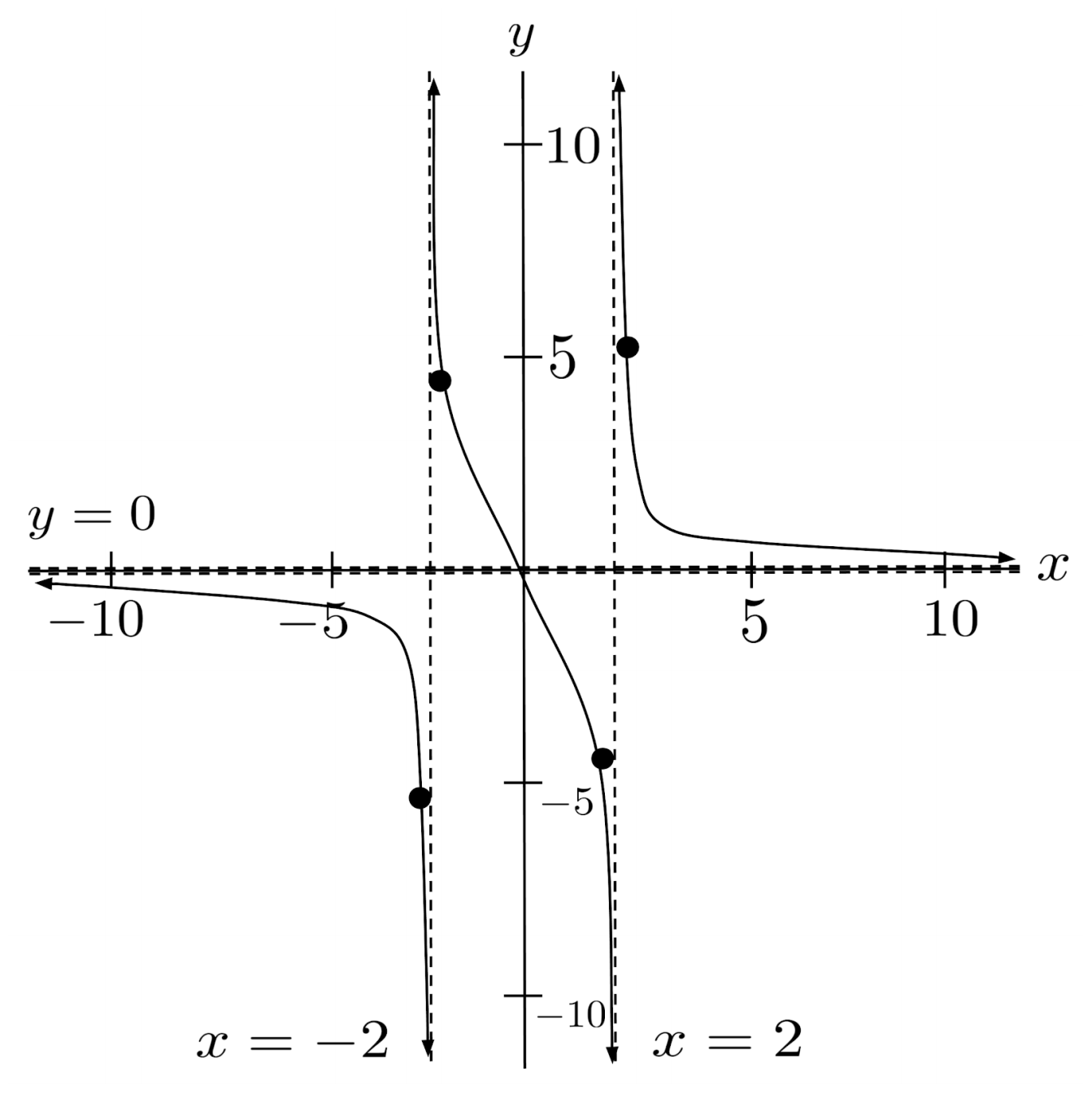
Exercises
Use horizontal and vertical asymptotes to graph the following rational functions. (You can view the solution by clicking on the problem.)
$1) \hspace{.5cm} r(x)=\dfrac{3x-10}{x-4}$
Solution:
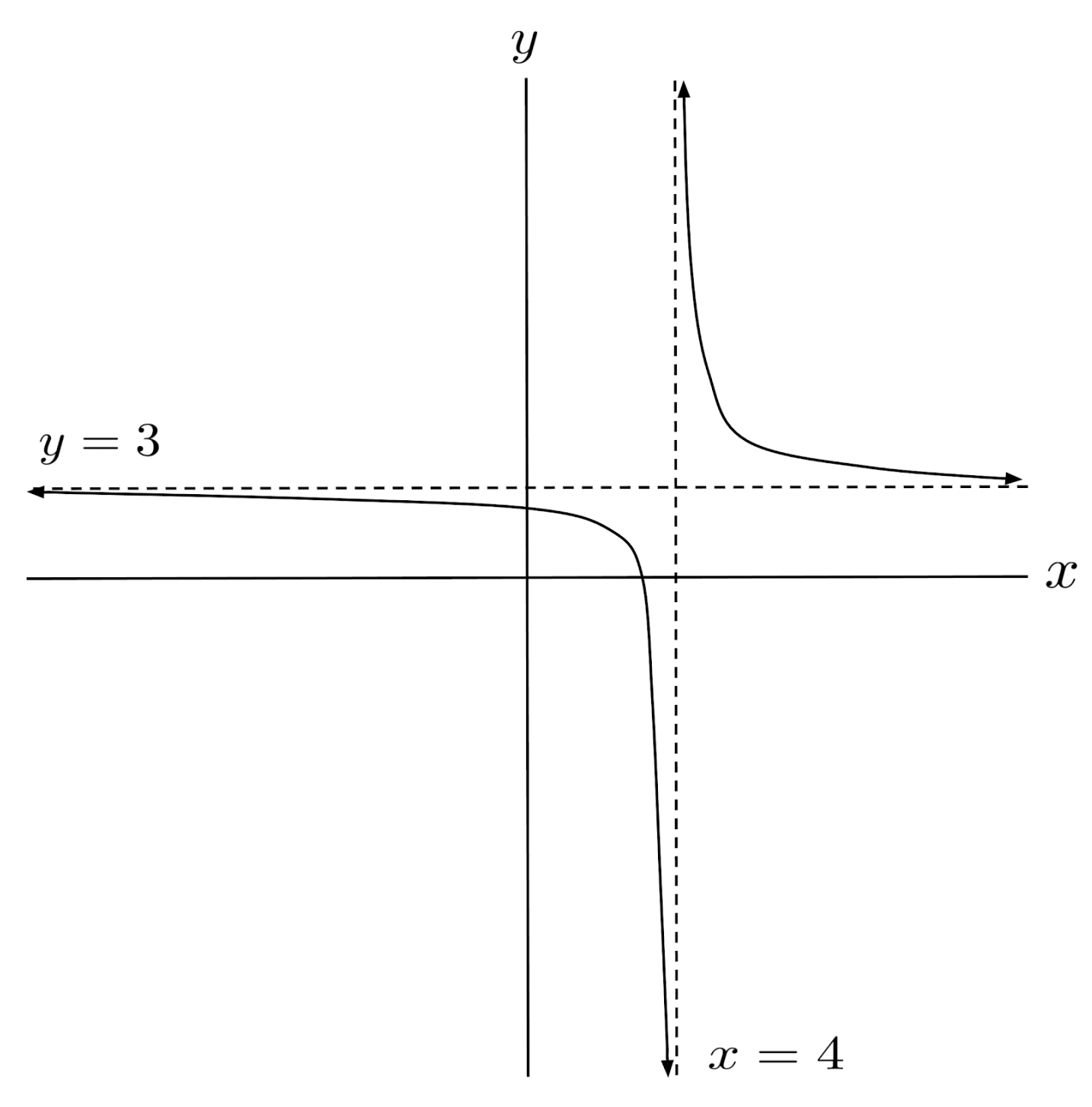
$2) \hspace{.5cm} r(x)=\dfrac{x-4}{2x^2-9x+4}$
Solution:

$3) \hspace{.5cm} r(x)=\dfrac{-3x^4+3x^2+x+32}{x^4-9}$
Solution:

$4) \hspace{.5cm} r(x)=\dfrac{9x^5+1}{6x^5-54x^3}$
Solution:

$5) \hspace{.5cm} r(x)=-\dfrac{x^3+x^2-x-1}{x^3-x^2-x+1}$
Solution:
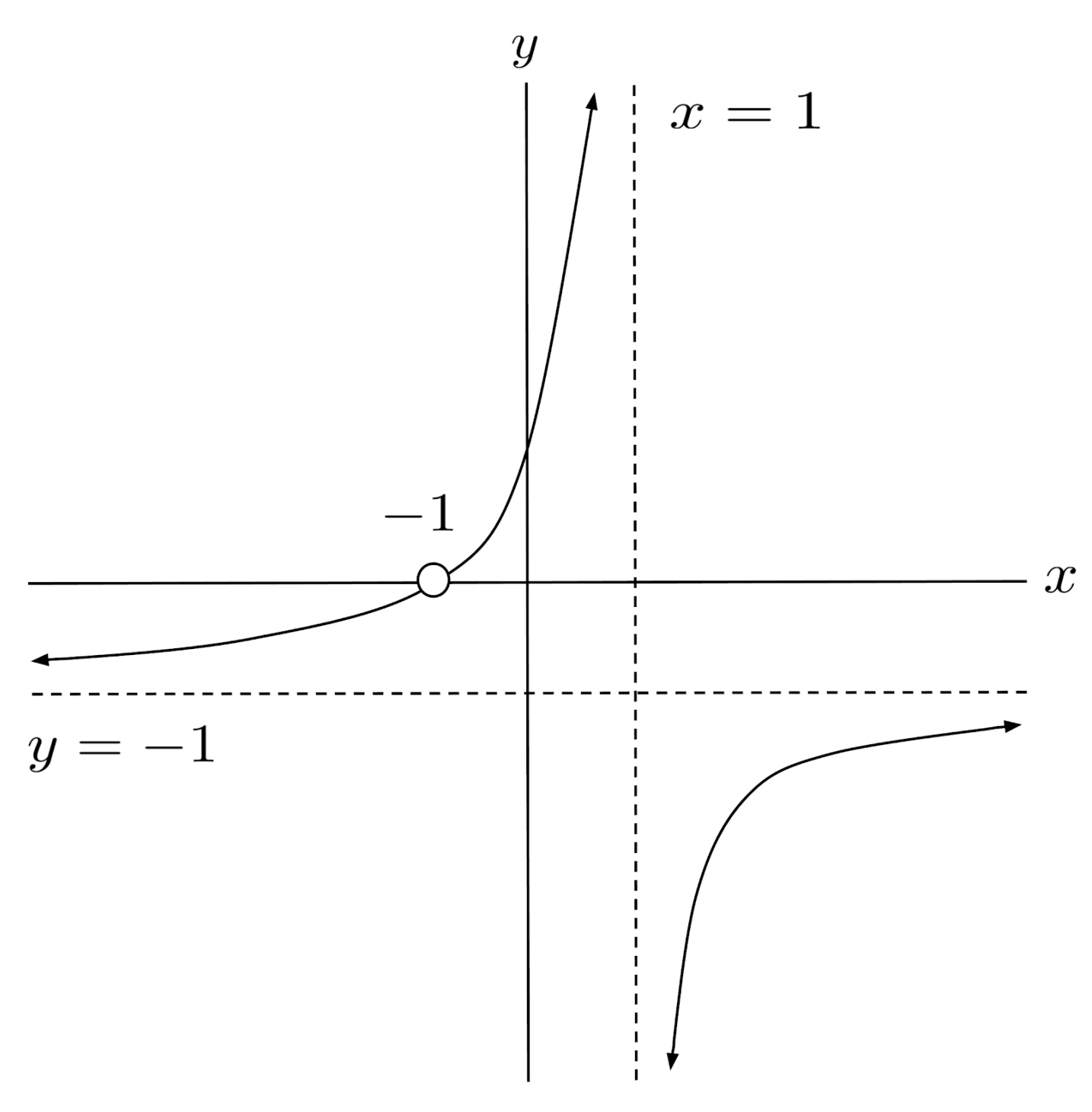
$6) \hspace{.5cm} r(x)=\dfrac{x+1}{x^4-20x^2+64}$
Solution:
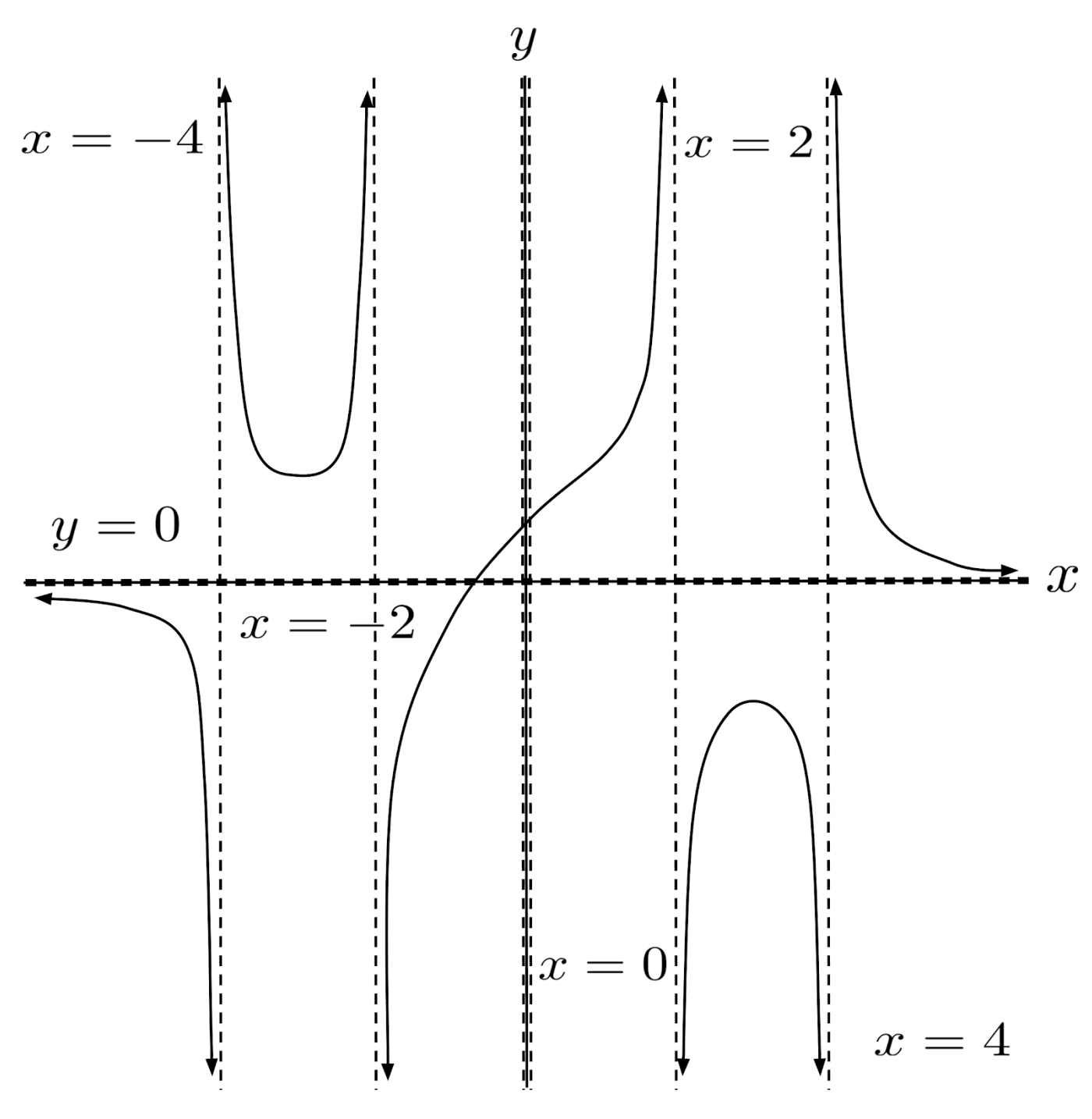
This post is part of the book Justin Math: Algebra. Suggested citation: Skycak, J. (2018). Graphing Rational Functions with Horizontal and Vertical Asymptotes. In Justin Math: Algebra. https://justinmath.com/graphing-rational-functions-with-horizontal-and-vertical-asymptotes/
Want to get notified about new posts? Join the mailing list and follow on X/Twitter.